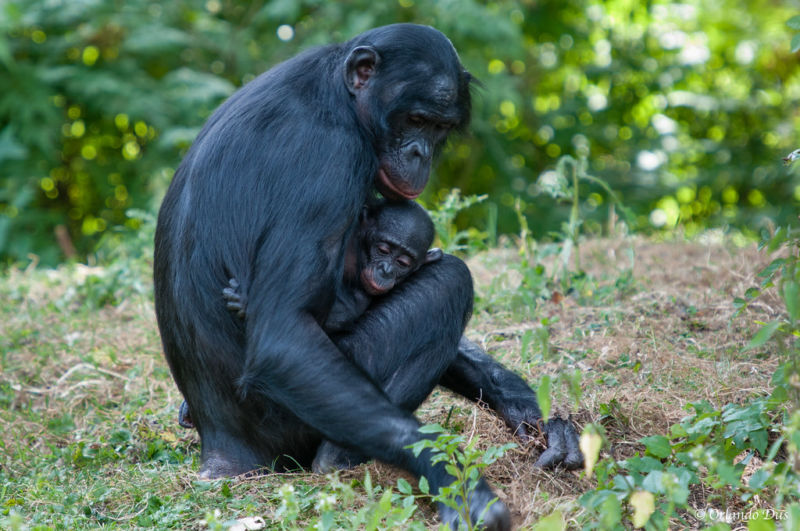I don’t know about y’all, but I’m spending this weekend stomping Nazis in the new Wolfenstein title (assuming it ever finished downloading). But if exacting revenge on some of modern history’s most notorious villains isn’t really your thing, we are s…
Source: Engadget – After Math: Never stop not watching
Monthly Archives: July 2019
It Sucks Being A Valet In GTA Online

The newly opened casino in Grand Theft Auto Online is a popular spot. Players are driving up to the casino constantly right now. Luckily for them, there is a valet working the front of the building. But being a valet in GTA Online is a dangerous job, especially if you are unarmed and out in the open. Since the casino…
Source: Kotaku – It Sucks Being A Valet In GTA Online
Fortnite World Cup: 15 Year Old British Winner Rakes $1M, Epic Payback For Lame Cheaters

Today we enter into the third and final day of the Fornite World Cup, capping off what has been a wild tournament with the Solo Finals at 1:00 pm ET (10:00 am PT). One of the more inspiring story lines is that of a relatively unknown (in the world of competitive gaming) British teenager who took second place in duos, netting him and his partner
Source: Hot Hardware – Fortnite World Cup: 15 Year Old British Winner Rakes M, Epic Payback For Lame Cheaters
Sunday's Best Deals: Dyson Cordless Vacuums, Star Trek: TNG, Microfiber Towels, and More

The Dyson V11 Animal, Star Trek: The Next Generation – The Complete Series, and Clorox Microfiber Bar Mops lead off Sunday’s best deals from around the web.
Source: LifeHacker – Sunday’s Best Deals: Dyson Cordless Vacuums, Star Trek: TNG, Microfiber Towels, and More
Alex Ross Draws Brandon Routh as Kingdom Come Superman

Last weekend, we learned that Brandon Routh, the Superman of Superman Returns, would be returning to the cape and tights for the CW’s upcoming Crisis event. We also learned that he wouldn’t just be returning as Superman—he’d be returning as the iconic Kingdom Come iteration of the hero. Or, at least, a Superman…
Source: io9 – Alex Ross Draws Brandon Routh as Kingdom Come Superman
Luke Skywalker-Inspired Prosthetic Arm Lets Amputee Feel Objects Again
CNN tells the story of a new medical breakthrough for Keven Walgamott, who 17 years ago lost one hand and part of his forearm in an electrical accident.
Now, Walgamott can use his thoughts to tell the fingers of his bionic hand to pick up eggs and grapes. The prosthetic arm he tested also allowed Walgamott to feel the objects he grasped. A biomedical engineering team at the University of Utah created the “LUKE Arm,” named in honor of the robotic hand Luke Skywalker obtains in “Star Wars: The Empire Strikes Back” after Darth Vader slices off his hand with a lightsaber.
A new study published Wednesday in the journal Science Robotics explained how the arm revived the sensation of touch for Walgamott. The University of Chicago and the Cleveland Clinic were also involved in the study… The LUKE Arm sends signals to the brain in order to mimic the way a human hand can feel and sense information about an object, like whether it’s soft, hard, lightweight or heavy. “We changed the way we are sending that information to the brain so that it matches the human body…” said Jacob George, study author and biomedical engineering doctoral student at the University of Utah. “We’re making more biologically realistic signals…”
Utah Emeritus Distinguished Professor Richard A. Normann invented the Utah Slanted Electrode Array, a grouping of 100 microelectrodes and wires implanted in the forearm’s nerves and connected to an external computer. The array was able to read signals from the nerves remaining in Walgamott’s arm while the computer converted them into digital signals. The signals would act like messages for the arm to move. But in order to be successful, things would have to work the opposite way as well, meaning the LUKE Arm would need to be able to sense objects and understand the necessary pressure needed to hold them. Sensors in the hand of the LUKE Arm send signals through the Array to the existing nerves, communicating the feeling the hand should be receiving when it touches something.
Created by DEKA R&D (founded by Segway inventor Dean Kamen), the LUKE arm “was in development for 15 years and is composed of metal motors with a clear silicon overlay that mimics skin,” the article points out.
While it currently draws power from an external battery (and is wired to a computer), they’re working on creating a wireless version.
Read more of this story at Slashdot.
Source: Slashdot – Luke Skywalker-Inspired Prosthetic Arm Lets Amputee Feel Objects Again
Time to Get Shady and Shop Sunglass Warehouse's Semi-Annual Sale

60% Off Clearance, 30% Everything Else | Sunglass Warehouse | Promo code CLEAR30
Source: io9 – Time to Get Shady and Shop Sunglass Warehouse’s Semi-Annual Sale
Sunday Comics: RAY OF DEATH

Hello! It’s time for Kotaku’s Sunday Comics, your weekly roundup of the best webcomics. The images enlarge if you click on the magnifying glass icon.
Source: Kotaku – Sunday Comics: RAY OF DEATH
SDL 2.0.10 released, testing a more regular release cycle
If you’re a game developer, you’ve likely heard of SDL 2 and plenty of you are probably already using it. In fact, SDL 2 helps power a huge amount of Linux games and a new release is out now.
Source: LXer – SDL 2.0.10 released, testing a more regular release cycle
This Is How A New Car Learns To 'See'

If you’re buying a new luxury car, it has a lot of gizmos to keep you from smashing into things. There are digital eyes that help you see better. Radar to help your car see other cars. Cameras to help identify lane markings. None of them, though, are worth a damn if the car doesn’t know which way they are pointing.
Source: Gizmodo – This Is How A New Car Learns To ‘See’
GNOME's Pango 1.44 Released With Many Text Rendering Improvements
GNOME’s Pango text layout and rendering library is now in much better shape with the brand new 1.44 release following receiving some attention by Red Hat’s developer team…
Source: Phoronix – GNOME’s Pango 1.44 Released With Many Text Rendering Improvements
EFF Argues For 'Empowerment, Not Censorship' Online
An activism director and a legislative analyst at the EFF have co-authored an essay arguing that the key to children’s safetly online “is user empowerment, not censorship,” reporting on a recent hearing by the U.S. Senate’s Judiciary Commitee:
While children do face problems online, some committee members seemed bent on using those problems as an excuse to censor the Internet and undermine the legal protections for free expression that we all rely on, including kids. Don’t censor users; empower them to choose… [W]hen lawmakers give online platforms the impossible task of ensuring that every post meets a certain standard, those companies have little choice but to over-censor.
During the hearing, Stephen Balkam of the Family Online Safety Institute provided an astute counterpoint to the calls for a more highly filtered Internet, calling to move the discussion “from protection to empowerment.” In other words, tech companies ought to give users more control over their online experience rather than forcing all of their users into an increasingly sanitized web. We agree.
It’s foolish to think that one set of standards would be appropriate for all children, let alone all Internet users. But today, social media companies frequently make censorship decisions that affect everyone. Instead, companies should empower users to make their own decisions about what they see online by letting them calibrate and customize the content filtering methods those companies use. Furthermore, tech and media companies shouldn’t abuse copyright and other laws to prevent third parties from offering customization options to people who want them.
The essay also argues that Congress “should closely examine companies whose business models rely on collecting, using, and selling children’s personal information…”
“We’ve highlighted numerous examples of students effectively being forced to share data with Google through the free or low-cost cloud services and Chromebooks it provides to cash-strapped schools. We filed a complaint with the FTC in 2015 asking it to investigate Google’s student data practices, but the agency never responded.”
Read more of this story at Slashdot.
Source: Slashdot – EFF Argues For ‘Empowerment, Not Censorship’ Online
Linux 5.4 To Support The Buttons On Newer Microsoft Surface Laptops
Coming for the Linux 5.4 cycle later this year will be support for the buttons on newer Microsoft Surface devices…
Source: Phoronix – Linux 5.4 To Support The Buttons On Newer Microsoft Surface Laptops
Sony is crowdfunding a wearable air conditioner
Are you struggling to cope with the heat outdoors? Sony might have a solution, if not as soon as you might like. The company’s First Flight program is crowdfunding a wearable air conditioner, the Reon Pocket, that slips into a pouch in a special t-…
Source: Engadget – Sony is crowdfunding a wearable air conditioner
15-inch MacBook Pro mini-review: How much does Apple’s fastest laptop offer?
-
The 2019 15-inch MacBook Pro—it looks just like last year’s model. [credit:
Samuel Axon ]
For the longest time, one of my main frustrations with the 15-inch MacBook Pro has been that you could usually get much faster video performance in similar Windows machines. For computers intended for video editors, game developers, and so on, that’s a big problem.
The MacBook Pro we reviewed last year was generally a good workhorse for Mac users, albeit with a steep price tag. But since we published that review, Apple has expanded its configuration options in two very important ways for performance. First, you can configure a new MacBook Pro with an Intel Core i9 CPU with eight cores, not just six. Second, there are now pricier workstation graphics options that up the video performance ante over any other recent MacBook Pro.
Of course, selecting both these options when buying means you’re spending a minimum of $3,349. So the question now becomes: does the Pro deliver performance that’s worth the cost, and who is this for at that price?
Read 24 remaining paragraphs | Comments
Source: Ars Technica – 15-inch MacBook Pro mini-review: How much does Apple’s fastest laptop offer?
How To Verify ISO Images In Linux
This brief guide describes how to verify ISO images in Linux to check the authenticiy and intergrity of the Linux ISO images.
Source: LXer – How To Verify ISO Images In Linux
Get a New Book to Read On the Beach During This Kindle Best Sellers Sale

Up to 80% Off Kindle Best Sellers | Amazon
Source: LifeHacker – Get a New Book to Read On the Beach During This Kindle Best Sellers Sale
Many animals can’t adapt fast enough to climate change

Enlarge / Bonobos carrying the footprint of an ancient, extinct species of ape. (credit: flickr user: Reflexiste)
Climate change has thrown our beautifully balanced planet into chaos. As oceans and forests transform and ecosystems go into shock, perhaps a million species teeter on the edge of extinction. But there may still be hope for these organisms. Some will change their behaviors in response to soaring global temperatures; they might, say, reproduce earlier in the year, when it’s cooler. Others may even evolve to cope—perhaps by shrinking, because smaller frames lose heat more quickly.
For the moment, though, scientists have little idea how these adaptations may be playing out. A new paper in Nature Communications, coauthored by more than 60 researchers, aims to bring a measure of clarity. By sifting through 10,000 previous studies, the researchers found that the climatic chaos we’ve sowed may just be too intense [Editor’s note: The researchers scanned 10,000 abstracts, but their analysis is based on data from 58 studies]. Some species seem to be adapting, yes, but they aren’t doing so fast enough. That spells, in a word, doom.
To determine how a species is adjusting to a climate gone mad, you typically look at two things: morphology and phenology. Morphology refers to physiological changes, like the aforementioned shrinking effect; phenology has to do with the timing of life events such as breeding and migration. The bulk of the existing research concerns phenology.
Read 11 remaining paragraphs | Comments
Source: Ars Technica – Many animals can’t adapt fast enough to climate change
EROFS-Utils Adds LZ4 Compression Bits, Finally Has A README
While initially the user-space utility for Huawei’s EROFS file-system was not publicly available, it came last November and this past April they began rewriting these EROFS user-space bits. Fortunately, since then they have done a better job of keeping EROFS-utils up-to-date against their latest kernel module changes for this read-only file-system…
Source: Phoronix – EROFS-Utils Adds LZ4 Compression Bits, Finally Has A README
Linux's 32-Bit Kernel Has Been Buggy Since Being Mitigated For Meltdown
Whether you like it or not, the Linux kernel’s x86 32-bit support has already begun suffering some minor forms of bit rot. Most kernel developers are no longer actively testing x86-32 and distribution vendors are beginning to drop 32-bit support. The latest example of x86 32-bit’s effectively demoted state is some buggy undefined behavior functionality living within the mainline kernel for the past year since the Meltdown mitigations landed…
Source: Phoronix – Linux’s 32-Bit Kernel Has Been Buggy Since Being Mitigated For Meltdown


